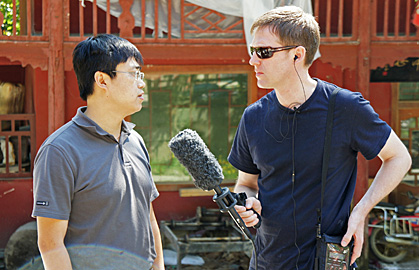Tag: Radio programs
Output: Producers swarm a conference, an ‘extreme journalist’ trots the globe, and more
A conference about ideas and creativity provided the latest opportunity for a group of adventurous radio producers to challenge their own inventiveness ...Advocates press FCC to open more channels for LPFMs
NPR, the National Association of Broadcasters and advocates for low-power radio expressed opposing views to the FCC in a proceeding that will ...Merger of Buffalo stations boosts news, reduces music
Public radio listeners are hearing more local news in Buffalo, where two stations that competed against each other are now operating as ...Pubradio, artists pair up to promote music radio
Public radio stations and NPR are promoting April as Public Radio Music Month, a campaign designed to raise awareness of the cultural ...Output: BackStory with the American History Guys scales up to weekly
Produced as a series of monthly specials since 2008, the show will relaunch in May with new segments exploring historical themes suggested ...Simple Googling dug up what Daisey had hidden
Within a few hours of phoning the translator who refuted key details in a This American Life show about factories that manufacture Apple products ...APM displaces PRI as BBC World Service distributor
American Public Media will begin distributing the BBC World Service to U.S. pubradio stations July 1 [2012], ending the British network’s 26-year ...Ombudsman seeks details on WAMU ‘meet the producers’ event
CPB ombudsman Joel Kaplan has urged WAMU-FM in Washington, D.C., to release more information about a gathering of major donors and station ...Alex Chadwick: Recharged to cover an energetic beat
Alex Chadwick was lost. It took a journey to an unlikely place — the whitewater rapids of a Utah canyon — for ...Adapting Daisey’s staged monologue for radio: less shouting, more intimacy
Update: On March 16, This American Life retracted “Mr. Daisey and the Apple Factory,” its Jan. 6 broadcast that adapted monologist Mike Daisey’s story ...Glass & Co.: Emboldened to tell hard-news stories
Update: On March 16, This American Life retracted “Mr. Daisey and the Apple Factory,” its Jan. 6 broadcast that adapted monologist Mike Daisey’s story ...APMG’s Florida classical station grows west with new FM
Miami-based Classical South Florida, an affiliate of American Public Media Group, is expanding its service to the state’s western coast with the ...Keillor’s fundraiser for Obama revives complaints of bias
Like many entertainers, Prairie Home Companion host Garrison Keillor has never tried to hide his liberal political leanings, but his decision to host an ...Unvetted war story slips past producers
A commentary created through an experimental radio project of the New America Foundation turned a harsh spotlight on the editorial vetting process at Marketplace, ...Face-to-face: a place for trying new things, delighting new audiences
At a time when many radio programmers are experimenting with Internet-based media, it may seem unusual for a station to take on ...







